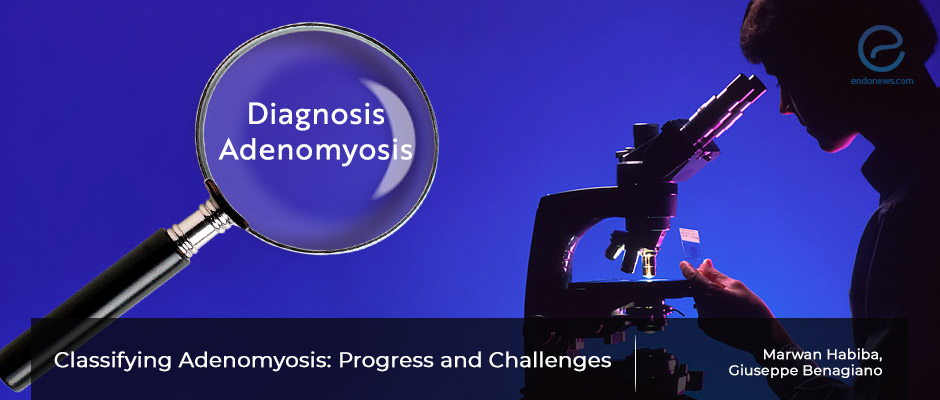A novel approach to a common lesion: mapping adenomyosis by imaging modalities
Mar 31, 2022
It is a necessity but clinically relevant adenomyosis classification is hard to accomplish
Key Points
Highlights:
- The conventional diagnosis of adenomyosis is by histopathological examination of tissues removed, but ultrasound and MRI may be used for preoperative diagnosis in clinical practice.
Importance:
- Adenomyosis is highly prevalent in women undergoing hysterectomy and in women seeking cures in infertility clinics.
- Forming a widely accepted classification of adenomyosis may enable a better appreciation of the important health burden.
What's done here:
- The authors present an overview of the features of adenomyosis that may be relevant for a clinically useful classification.
- They also provide an analysis of previous and more recent attempts on this subject.
Key results:
- Although there are significant advances in adenomyosis research, a satisfactory classification remains hard to put forward due to the lack of relevant clinical correlates.
- A pathophysiological classification does not seem feasible but attempts at detailed disease mapping may yield information for a clinically oriented classification scheme.
Lay Summary
Dr. Habiba from Leicester, UK, and Dr. Benagiano from Rome, Italy, have published their overview on adenomyosis in an attempt to set light on a clinically important topic in a recent issue of the "International Journal of Environmental Research and Public Health".
The common widely accepted definition of adenomyosis is the presence of endometrium, with both glandular and stromal components, in the uterine muscle layer. There is a wide variation in the incidence rates ranging from 5 to 70%. This is thought to depend on various diagnostic criteria besides variation in study populations and methodological differences. The classical diagnostic method is by a microscope, i.e., histopathological examination of tissues removed. However, ultrasound and MRI are now widely available with increasing preoperative use in clinical practice.
Adenomyosis has been linked to menorrhagia, dysmenorrhea, chronic pelvic pain, infertility, and spontaneous abortions. Adenomyosis is a highly prevalent condition seen at histopathological examinations of hysterectomies. Besides, it is well known that adenomyosis results in menorrhagia, dysmenorrhea, chronic pelvic pain, infertility, and spontaneous abortions. Reaching a consensus on a widely accepted classification of adenomyosis could help in better appreciation of the important health burden besides outcomes of currently availably therapeutic options.
The authors have presented an overview of the features of adenomyosis that may be relevant for a clinically useful classification providing an analysis of previous and more recent attempts on this subject. Pioneering works on classification attempts used microscopic criteria with a focus on mapping the depth of endometrial tissue within the myometrium, both to define the extent of the disease and also for a diagnostic cut-off point. Making a distinction between adenomyosis and the physiological irregularity at the interface between the basal endometrium and the myometrium remains a dilemma.
Imaging-based diagnosis of adenomyosis by ultrasound and MRI enables a panoramic view of the uterus and yields a clear-cut opportunity for disease mapping. However, a distinction is needed between disease mapping based on the anatomical location of lesions and disease categorization based on symptoms or prognostic criteria. The International Endometrial Tumor Analysis (IETA) Group which was established to classify the sonographic features of endometrial and intrauterine lesions, described features proposed for adenomyosis in 2015.
Though there have been significant advances in understanding the adenomyosis dilemma, a consensus classification still remains challenging. There is a limitation in our understanding of the clinical correlates and a pathophysiology-based classification also seems impossible. Recent attempts at detailed disease mapping may well provide data needed for a clinically feasible classification system.
Research Source: https://pubmed.ncbi.nlm.nih.gov/34886111/
adenomyosis histopathology imaging classification gynecology hysterectomy

